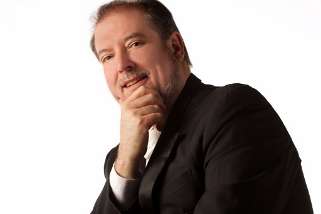|
Back
Beethoven or Bust... Ottawa
Southam Hall, National Arts Centre
01/06/2016 - & January 7, 2016
Ludwig van Beethoven: Leonore Overture No. 2, Op. 72 – Piano Concerto No. 4 in G major, Op. 58 – Symphony No. 5 in C minor, Op. 67
Garrick Ohlsson (piano)
National Arts Centre Orchestra, John Storgårds (conductor)

G. Ohlsson (© Paul Body)
“BEETHOVEN OR BUST...” proclaimed the printed program’s title page, and the sometimes adumbrated performance this week by The National Arts Centre Orchestra (NACO) delivered in more ways than one.
Under the baton of Finnish-born John Storgårds, NACO’s Principal Guest Conductor effective last September – he previously conducted here exactly a year ago – the players reached their full potential only toward the end of the Symphony No. 5, one of the composer’s most beloved and structurally grandiose works. Storgårds opted for a brisk pace for the first movement with its quintessentially Beethoven ‘question and answer’ opening. But the playing was sometimes muddy even when taut rhythms and solid intonation could be taken for granted. There was improvement and keener focus in the second movement, almost a waltz-meets-march distinguished by admirably precise work from wind and brass players. It was, however, in the third movement that things really took off and the exciting suspense which Beethoven crafted so masterfully was fully realized. Referencing the initial ‘question and answer’ the third movement soon evolved into a sensuous tease with extended string pizzicato leading to a stunning crescendo transition to the final movement, a triumphal fugue shared by all players, including those pizzicato strings. The playing was highly energized, there were no lulls and Storgårds did a masterful job of building to the work’s final climax, which quickly brought the nearly full house to its feet.
The concert had opened with the familiar Leonore Overture No. 2, given a routine though always competent reading. Textures, overall, were on the muddy side and greater definition and dynamic range might have made the work more interesting.
Next, it was Beethoven’s sublime Piano Concerto No. 4 in G major, one of the composer’s most deceptively complex and sophisticated larger works in which both piano and orchestra encompass the elegantly classic lyricism of Mozart with the denser textures of Brahms and (for the piano) Chopin. The Concerto is from the same era (the 19th century’s first decade) when Beethoven composed his Waldstein and Appassionata Sonatas and the two cadenzas in particular echo both works.
The soloist, veteran American pianist Garrick Ohlsson provided a fastidiously lyrical performance which was not quite in synch with the conductor’s ideas. Ohlsson sometimes took tempi that overtook the orchestra, though his playing was never rushed per se (if anything, he projected a scrupulousness which recalled Rudolf Serkin and Sviatoslav Richter’s Beethoven during the mid-late 20th century). It just seemed that two divergent personalities weren’t always meeting; or perhaps simply there hadn’t been sufficient rehearsal. Playing on the National Arts Centre’s house Hamburg Steinway, Ohlsson projected well, especially in the scaling filigree during much of the first movement, and he further shone in the cadenzas. At times, however, the orchestra was just too loud and – again – muddy. Ultimately this proved a work-in-progress performance which nonetheless had promise of something better down the road. It was the kind of performance which was sufficiently good that listeners may find it disaffecting and frustrating even when they have enjoyed many aspects though know it might have been a lot better.
The evening’s hero of course was Mr. Ludwig van Beethoven. Even with sometimes problematic performances, Beethoven is a composer whose work never fails to fascinate listeners and, some two centuries after its creation, remains as compelling, beautiful and modern as ever.
Charles Pope Jr.
|